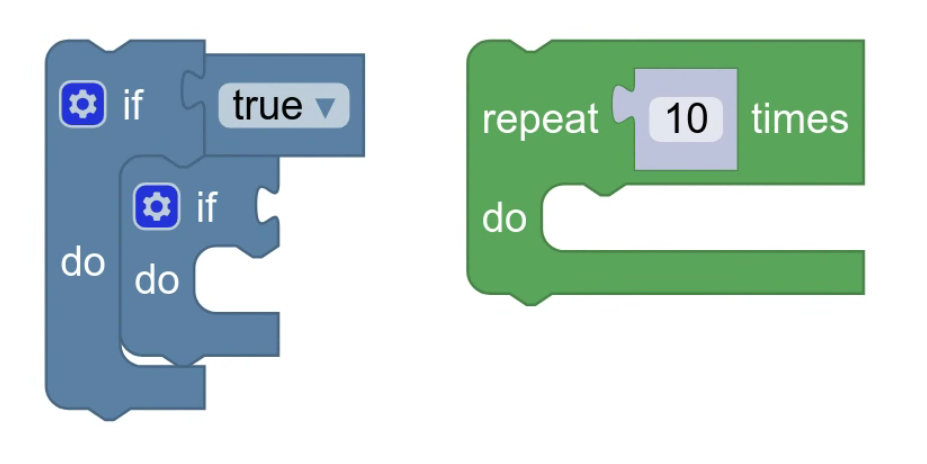カスタム レンダラを作成するには、Renderer クラスのサブクラスを作成する必要があります。レンダラとその機能の詳細については、レンダラのコンセプト ドキュメントをご覧ください。
class CustomRenderer extends Blockly.blockRendering.Renderer {
constructor() {
super();
}
}
カスタマイズしない場合、デフォルトのレンダラは次のようになります。

他の組み込みレンダラのいずれかをサブクラス化して、その一部をオーバーライドすることもできます。
class CustomRenderer extends Blockly.thrasos.Renderer {
constructor() {
super();
}
}
他のレンダラ コンポーネントのサブクラスを作成する
ブロックの実際の形状は、レンダラのサブコンポーネントによって決まります。
デフォルトでは、Renderer クラスはすべてのレンダラ コンポーネントの動作バージョンを提供します。これにより、他のコンポーネントを気にすることなく、単一のコンポーネントを変更できます。
たとえば、接続の形状を変更する場合は、他のコンポーネントに変更を加えなくても、定数をオーバーライドできます。
各コンポーネントの機能の詳細については、レンダラ コンポーネントのドキュメントをご覧ください。
ファクトリ メソッドをオーバーライドする
レンダラ コンポーネントをサブクラス化したら、サブクラス化したコンポーネントの Renderer のファクトリ メソッドをオーバーライドする必要があります。これにより、レンダラはさまざまなコンポーネントを適切に接続できます。
コンポーネントの種類ごとにメソッドがあります。
makeConstants_makeRenderInfo_makePathObject(アンダースコアはありません)makeDrawer_
レンダラを登録する
最後に、カスタム レンダラを作成したら、それを登録する必要があります。これにより、レンダラが文字列に関連付けられ、構成オプションに渡すことができます。
Blockly.blockRendering.register('custom_renderer', CustomRenderer);
const workspace = Blockly.inject(blocklyDiv, {
renderer: 'custom_renderer',
});

